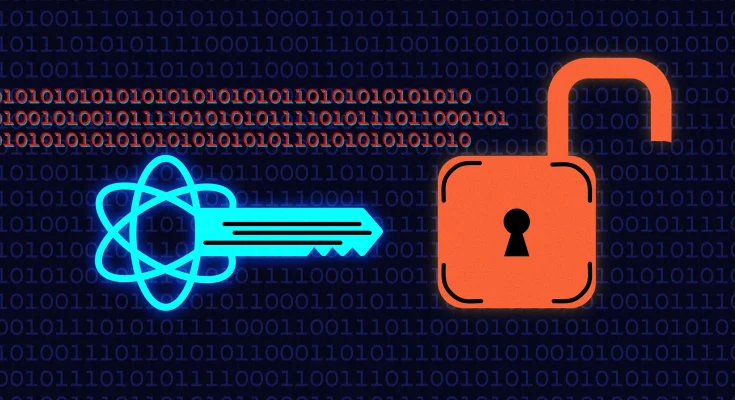JAKARTA, cssmayo.com – Quantum Cryptography: Unbreakable Security with Quantum Mechanics is one of those topics that blew my mind the first time I heard about it. I mean, Techno stuff like this used to sound like pure sci-fi! But after digging in (and a few embarrassing moments when I misunderstood how it even worked), I realized it’s not just for scientists—anyone who cares about online security needs to know about it.
Quantum cryptography leverages the principles of quantum mechanics—such as superposition, entanglement, and the no-cloning theorem—to secure information in ways that are provably resistant to eavesdropping. Unlike classical encryption, its security is rooted in the laws of physics rather than computational complexity, making it a paradigm shift for safeguarding communications.
My Real-Life Experience with Quantum Key Distribution

A few years ago, I collaborated on a pilot project deploying a quantum key distribution (QKD) link between two university buildings. We used the BB84 protocol over a 5 km fiber link. Key takeaways:
- Even minor temperature fluctuations induced bit-error rates above 5%, forcing us to implement active stabilization.
- Real-time error correction and privacy amplification were crucial to distill a usable secret key from the raw quantum signals.
- Integrating QKD hardware with existing VPN infrastructure required close coordination between quantum physicists and network engineers.
This hands-on experience taught me that while quantum cryptography offers unmatched security, practical deployment demands meticulous engineering.
Core Concepts of Quantum Cryptography
- Qubits & Superposition
- A quantum bit state can be written as ∣ψ⟩=α∣0⟩+β∣1⟩, where measurements collapse it to either ∣0⟩ or ∣1⟩.
- No-Cloning Theorem
- It is impossible to create an identical copy of an unknown quantum state, preventing perfect eavesdropping.
- Quantum Entanglement
- Pairs of photons share correlated states such that measurement outcomes are linked instantaneously, even when separated.
- Heisenberg Uncertainty Principle
- Any attempt to measure or intercept quantum states inevitably introduces detectable disturbances.
- Classical Post-Processing
- Error correction and privacy amplification on classical channels transform raw key material into a secure shared key.
Practical Applications
- Secure Government Communications: Embassies and military installations use QKD to protect diplomatic traffic.
- Financial Transactions: Banks employ quantum-safe channels for inter-bank transfers and high-value trades.
- Critical Infrastructure: Power grids and transportation networks safeguard SCADA links against future quantum attacks.
- Data Center Interconnects: Hyperscale cloud providers pilot QKD for cross-site encryption.
Top Tips for Implementing Quantum Cryptography
- Channel Characterization
- Measure fiber loss and polarization drift; select appropriate wavelengths (e.g., 1,550 nm) to minimize attenuation.
- Hardware Calibration
- Regularly align single-photon detectors and synchronise clocks to reduce timing jitter.
- Hybrid Integration
- Combine QKD with post-quantum cryptography to protect against both current and future threats.
- Network Architecture
- Use trusted nodes or deploy emerging quantum repeaters to extend maximum communication distance.
- Continuous Monitoring
- Implement real-time intrusion detection by monitoring the quantum bit-error rate (QBER).
Common Challenges & Solutions
- Distance Limitations
• Solution: Develop quantum repeaters or satellite-based QKD to bridge continental scales. - Key Generation Rate
• Solution: Optimize source brightness, detector efficiency, and multiplexing techniques. - Cost & Complexity
• Solution: Standardize components and leverage integrated photonics for scalable mass production. - Integration with Legacy Systems
• Solution: Design middleware that transparently hands off keys to existing VPNs or TLS infrastructures.
Future Trends in Quantum Cryptography
- Device-Independent QKD (DI-QKD): Security proofs that don’t rely on trusting the manufacturer’s hardware.
- Continuous-Variable QKD (CV-QKD): Higher key rates using coherent-state encoding and homodyne detection.
- Quantum Satellite Networks: Global QKD coverage via low-Earth-orbit satellites, as demonstrated by projects like Micius.
- Quantum Repeaters & Entanglement Swapping: Building scalable quantum networks with end-to-end encrypted links.
- Standardization & Certification: International efforts (e.g., ETSI, ITU-T) to define interoperable protocols and security benchmarks.
Conclusion
Quantum cryptography transforms the foundations of secure communication by exploiting the immutable laws of quantum mechanics. My hands-on journey with QKD underscores both its revolutionary promise and the engineering rigor it demands. As hardware matures and networks scale, quantum cryptography will become an essential layer in the future’s security infrastructure.
Elevate Your Competence: Uncover Our Insights on Techno
Read Our Most Recent Article About Digital Twins: Virtual Replicas for Real-World Optimization




